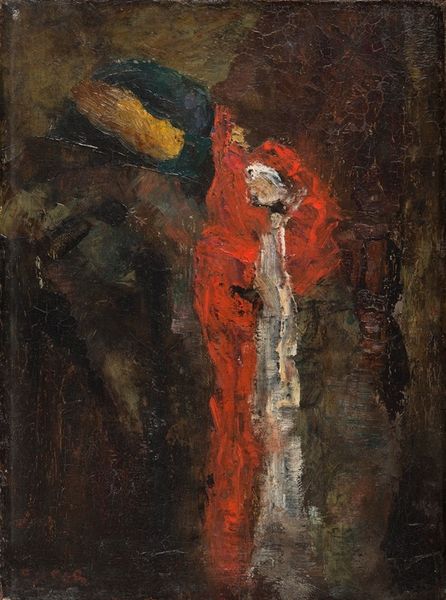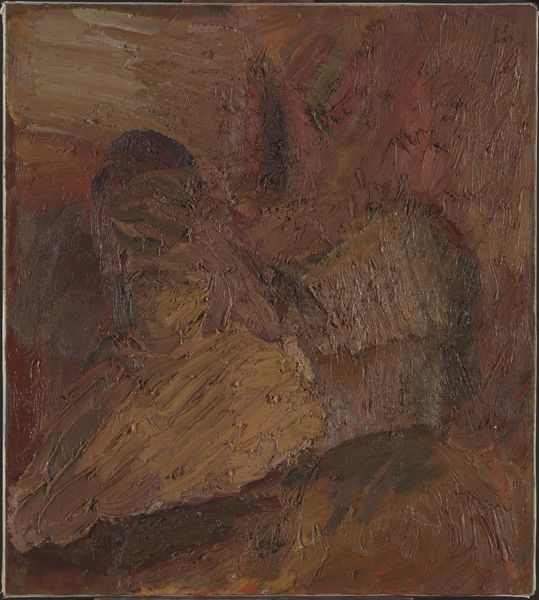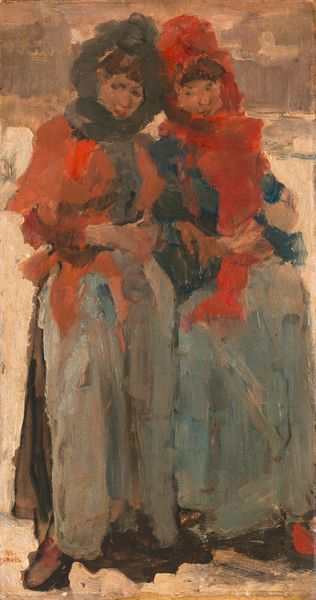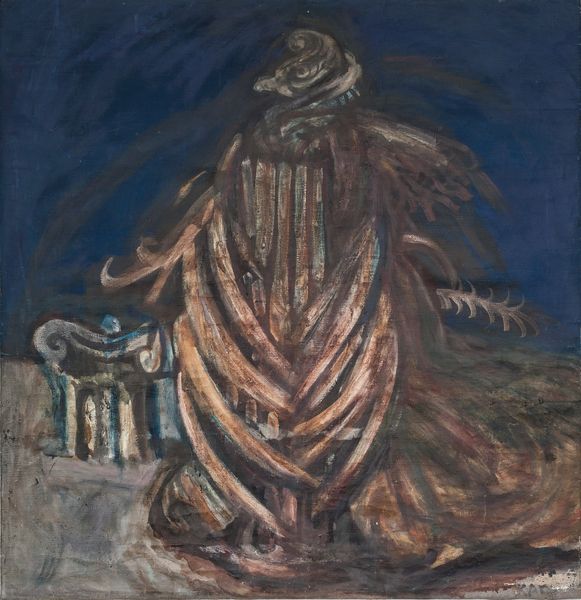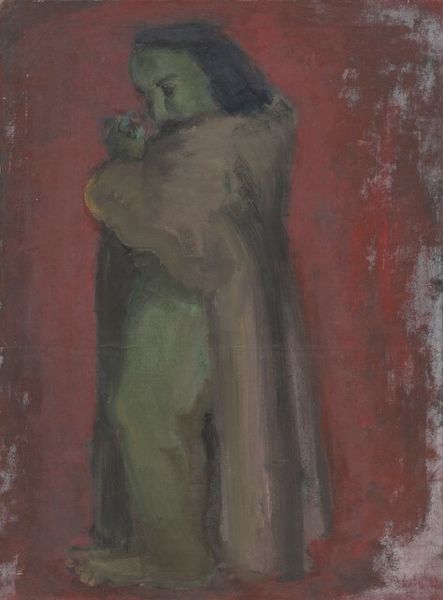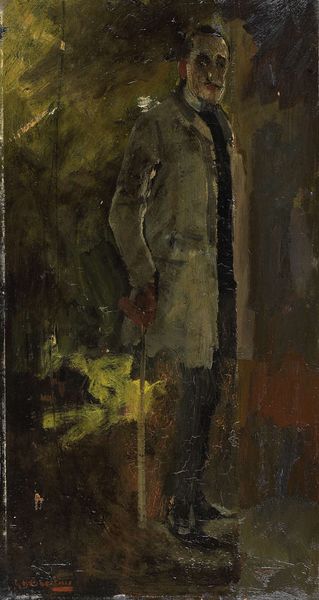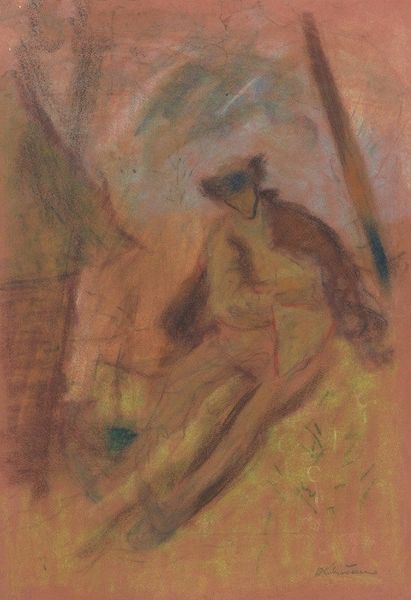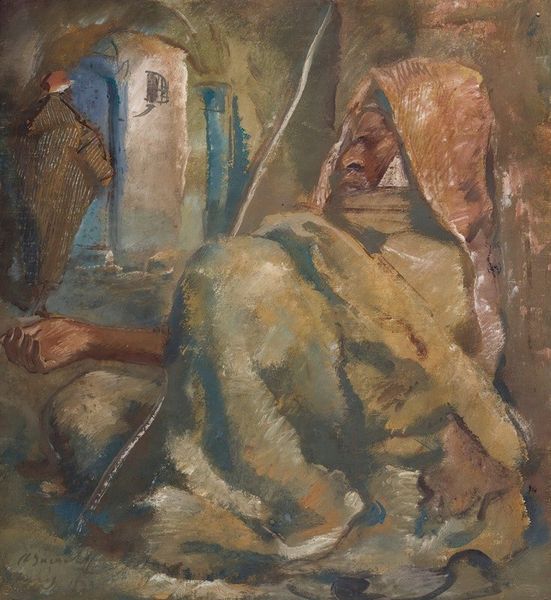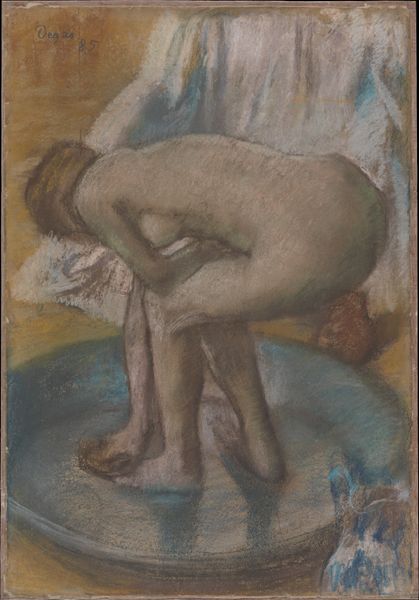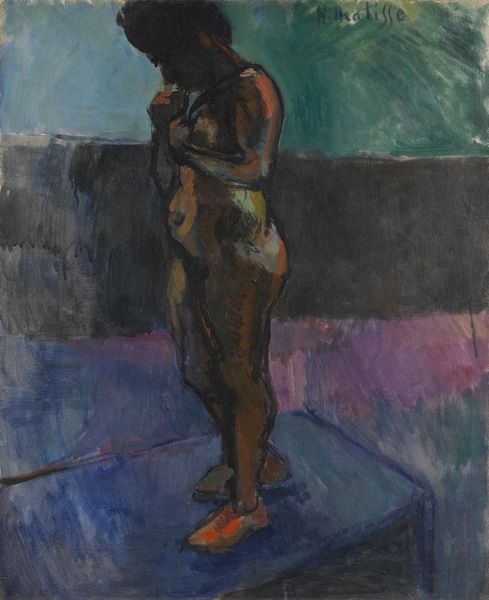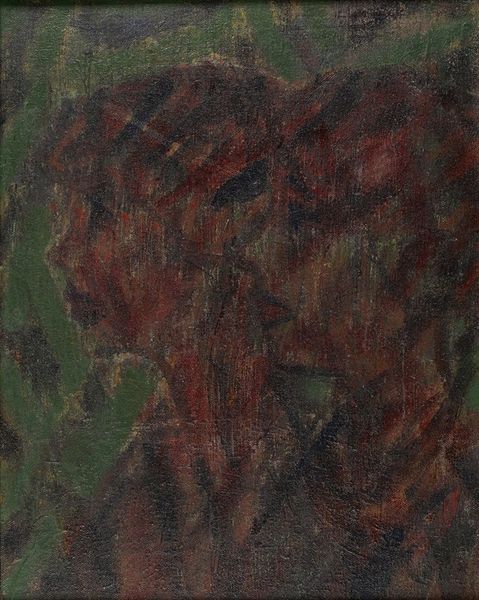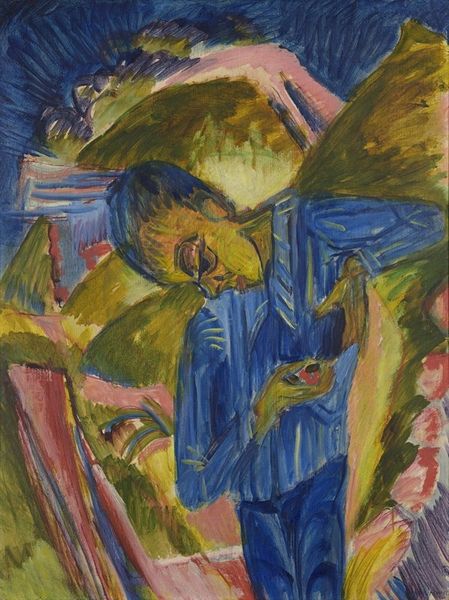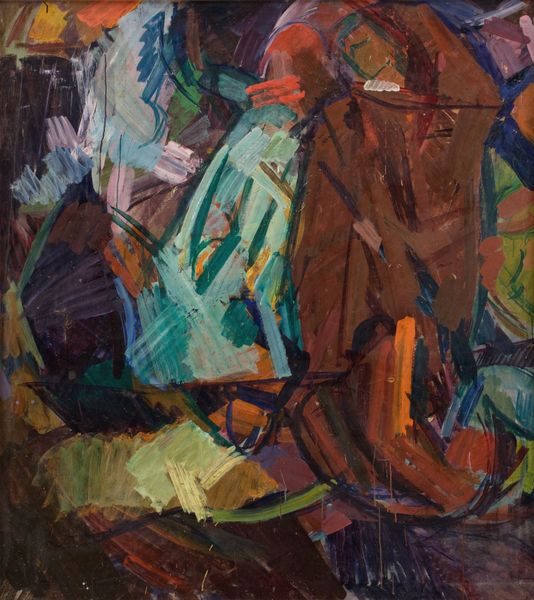
oil-paint
#
portrait
#
oil-paint
#
figuration
#
oil painting
#
expressionism
Dimensions: 137 cm (height) x 115 cm (width) (Netto), 148 cm (height) x 125.5 cm (width) x 6.4 cm (depth) (Brutto)
Curator: Here we have J.A. Jerichau's oil painting, "The Black Prophet. Prophets Opus II", created in 1914. Editor: Its sombre palette is immediately striking, isn't it? Deep blues and blacks mostly, offset by a vibrant, though somewhat desaturated, red that seems to emanate from the central figure. Curator: Indeed. Given the date, one could consider the availability and cost of pigments during that tumultuous pre-war period in Europe. The deep shadows and that intense, manufactured red suggests particular economic choices as well as aesthetic ones. What social narratives can you read in those colours? Editor: Setting aside your fascinating point about production logistics for a moment, the formal dynamism captures the eye, I'd say. The figure is off-centre, with upward reaching hands adding an asymmetry that hints at turmoil or perhaps supplication. Curator: Perhaps the gesture stems not from abstract turmoil, but the very real economic turmoil facing artists and the working class. Do the worn textures speak of austerity in Jerichau's life, influencing the rough handling of the oil paint itself? The rapid brushstrokes may mirror anxieties tied to the rapid industrial shifts around him, informing the creation and even reception of art objects. Editor: The application of paint embodies an expressionist style, I agree, and clearly contributes to a sense of immediacy. The Prophet seems engulfed, swallowed by a shadowy setting – could this represent a loss of faith? Curator: Or perhaps alienation linked to societal shifts. How were prophetic figures, these voices of dissent, commodified, or ignored in early 20th-century Europe? How did the role of religion shift in industrialised economies, impacting cultural producers like Jerichau? Editor: Very compelling ideas. For me, however, this piece invites thoughts about inner psychological states given its form and composition; this internal struggle portrayed through outward, gestural expressiveness. Curator: I appreciate your formalist take; thinking about that brushwork informs the means by which meaning is crafted for Jerichau’s audience then and now, doesn't it? Editor: Precisely. Together, that blend offers some fascinating perspectives to our audience.
Comments
No comments
Be the first to comment and join the conversation on the ultimate creative platform.
